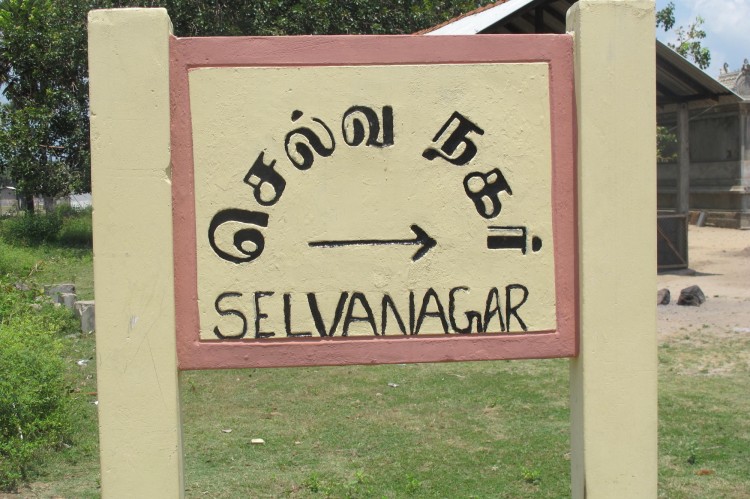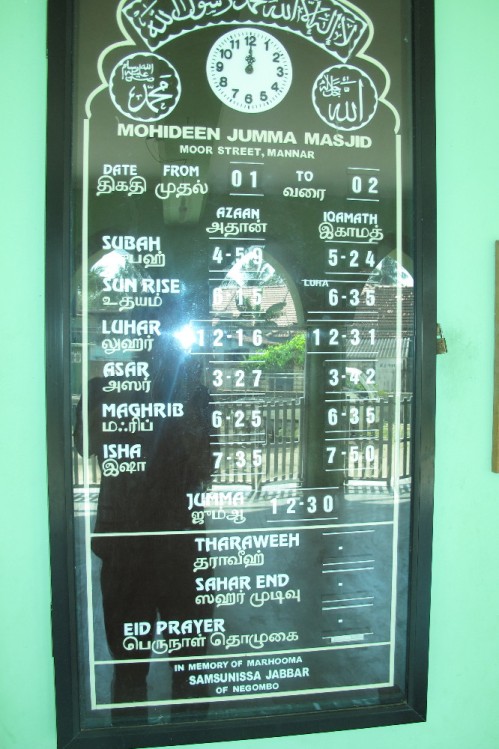A colourful sign on Mannar Island
Foreign alphabets and scripts are often considered one of the main barriers to learning another language (along with other linguistic bogeymen such as gender, multiple cases and tones). In the case of Tamil, this impression is held both by people who don’t speak the language as well as by many Tamils themselves. I have often heard that the script is one of the hardest things about Tamil, particularly because it has 240-odd letters compared to the Roman alphabet’s 26.
If you are being held back by these preconceptions, get rid of them right now! The Tamil script can be learnt by absolutely anyone, not just by fantastical beings blessed with superhuman intellect or an imaginary ‘natural talent for languages’. In reality, all it takes is a little time, focus, and – most importantly – motivation. Rather than being an insurmountable challenge, the script will actually be one of the easiest tasks you’ll face when learning Tamil.
The mechanics
Let’s take a look at how the Tamil script works in practice, without worrying about pronunciation (which we can save for future posts). The basic script has 12 vowels and 18 consonants, which are known respectively as ‘life letters’ (uyireLuttu, உயிரெழுத்து) and ‘body letters’ (meyyeLuttu, மெய்யெழுத்து). There are different conventions for transcribing Tamil, but I have used the one below for the sake of clarity and because it doesn’t involve any symbols not already on a keyboard. To reiterate: this is not an exact guide to pronunciation.
Vowels / life letters
அ a ஆ aa இ i ஈ ii உ u ஊ uu
எ e ஏ ee ஐ ai ஒ o ஓ oo ஔ au
Consonants / body letters
க் k ங் ng ச் c ஞ் nj ட் T ண் N
த் t ந் n ப் p ம் m ய் y ர் r
ல் l வ் v ழ் L ள் L ற் R ன் n
There’s one key difference between Tamil and the Roman alphabet. If you want to change the vowel following a consonant, you can’t simply drop a vowel into place. Instead, you need to use specific vowel markers – otherwise known as diacritics – which sit before, after, above or below the consonant. Usually the consonant retains its original shape, although in a minority of cases the diacritics change the shape of the consonant itself. The new vowel + consonant combination is a syllable rather than a letter, and in Tamil is called a ‘life-body letter’ (uyirmeyyeLuttu, உயிர்மெய்யெழுத்து). Below is an example of how the diacritics are applied to the consonant k:
க் க கா கி கீ கு கூ k ka kaa ki kii ku kuu
கெ கே கை கொ கோ கௌ ke kee kai ko koo kau
What all this means is that the Tamil script consists of:
- letters (the vowels and the consonants in their basic forms)
- self-contained syllables
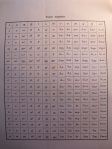
As a result, the Tamil script is an alphasyllabary rather than simply an alphabet. If you count all of the vowels and consonants listed above, as well as all of the syllables formed with diacritics, you will be left with 246. One other letter, ஃ (ah, considered part of the basic Tamil script but almost never used in practice) brings us to the regularly quoted total of 247. The table on the right, from An Introduction to Spoken Tamil (Gair, Suseedirarajah and Karunatilaka, 1978) shows what all 247 look like when brought together (although please see my comments on this particular table below).
However, there are actually several other consonants, known as Grantha letters, which are used for writing words from other languages: ஜ் (j), ஸ் (s), ஹ் (h), ஷ் (sh), ஶ் (sh) க்ஷ் (ksh). Although these are usually not included in charts of the Tamil script, the first three at least are used fairly often.
In the photo below you can see both ஃ and Grantha letters used to write Arabic prayer times at Mannar’s Jumma Mosque.
All of this might look daunting, but it’s actually very straightforward, for two reasons.
First, the way in which diacritics are applied to consonants is completely regular in almost every case. For example: பீ (pii), லீ (lii), மீ (mii), ரீ (rii). The only exception to this occurs when you want to use the diacritics for -u and -uu. This is because these diacritics take more than one form and occasionally change the body of the consonant itself: து (tu) ரு (ru) பு (pu). However, even here there are two or three regular patterns.
Second, although the Tamil script is not entirely phonetic, it is much more so than the Roman alphabet as used in English. This means that – once you have a firm grasp of the Tamil sound system – it’s much easier both to pronounce unknown words correctly and to spell words after hearing them.
Having had some feedback on this point, I need to insert a caveat here. While this has been my experience in Sri Lanka’s Northern Province, it may be less accurate for speakers in other regions. For example, I am aware that some Tamil speakers don’t use retroflex consonants, so ழ், ள் and ல் are pronounced identically. The differences in pronunciation between spoken and written Tamil also further complicate the situation. If you have any thoughts about this, please share them below, and we can also discuss it at greater depth in future posts dedicated to pronunciation.
Despite this, I think that the Tamil script is much more straightforward and logical than English. Below I give another reason for why this is so.
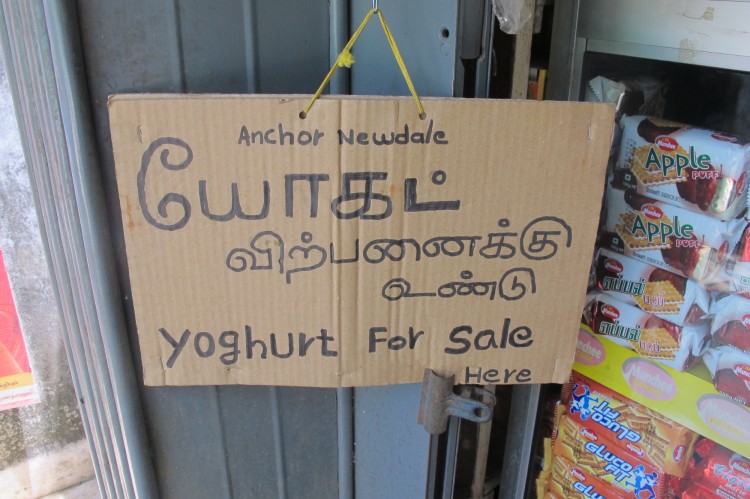
Mannar shopfront
247 vs 26
I want to debunk the argument that Tamil has over two hundred more letters than the Roman alphabet. This is easy because it relies on a false analogy: most of the symbols being counted aren’t really letters at all, in the English sense of the term.
For a more accurate comparison you would have to list all of the different consonant-vowel combinations in English, of which I’m sure there are just as many as in Tamil, and the way in which they are spelt. This would actually be much more complicated than Tamil thanks to the English language’s notoriously flexible and often entirely counterintuitive relationship between spelling and pronunciation. Think of the way English represents the same sounds with different letters (piece / piste / peace / pees and – even worse – law / more / four / floor / boar / caught), or the way in which the same letters can be used for a number of sounds (crow/how).
It’s worth noting that if Tamil has 247 letters by this method of counting, Sinhala – which is also an alphasyllabary and works in exactly the same way as Tamil – has at least a hundred more. However, in my experience Sinhala speakers tend to emphasise that Sinhala is an easy language to learn, an idea shared by many Tamils too! I don’t think I have ever heard anyone saying that ‘the Sinhala script is harder than English because it has 350-plus letters’.
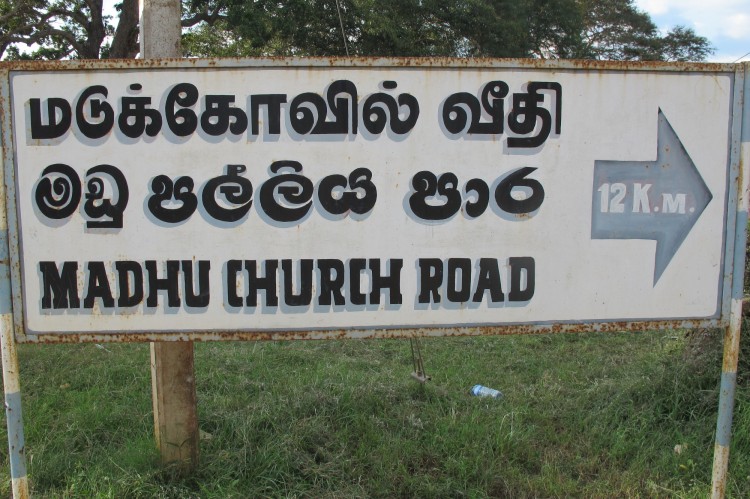
Madhu, Sri Lanka’s most important Catholic shrine
6 practical tips
1. Just as there’s no great mystery behind the Tamil script, there’s no magical secret to learning it. You can simply make yourself a set of flash cards and work through them until you are confident. It’s not exciting, but it works, and if you set aside twenty minutes a day there’s no reason you shouldn’t have mastered them within a week. If you do make your own flash cards, don’t forget to include
- vowels
- consonants
- Grantha consonants
- all diacritics – minus consonant – with the exception of -u and -uu
- individual cards for life-body syllables with the diacritics for -u and -uu
Because most of diacritics are regular, there’s no need to make cards for every single life-body syllable, and by this method you should end up with around 100 cards.
2. Foregoing physical flash cards, you could use Anki, a free flash card programme I plan to discuss in greater depth in the future. Briefly, Anki lets you download or create your own decks of flash cards. Anki will give you a daily selection of new and old cards to view and, depending on how difficult you find a specific card to remember, it will automatically decide the the length of time before that card appears again. So far no one has uploaded a deck for the Tamil script, but if anyone does please let me know! If I have some free time I will try to get one up over the next few weeks.
3. Learning how to write the script properly, rather than just guessing the correct strokes, helps your memory and builds confidence. Unfortunately, I can’t recommend a decent website or book to help with this because I was taught by Tamil friends. Can anyone else?
4. One great way of quickly getting to grip with the alphabet is to start typing in Tamil as soon as possible. The best way to do this is with Anjal, a programme for Windows and Mac OS which lets you to type in Tamil using a QWERTY keyboard and a simple phonetic system. For example, Anjal will automatically turn k + a + a into கா. Anjal comes free with Macs and at least some Windows PCs, so take a look at your language input options. Otherwise you can buy it from Murasu Anjal.
5. Another tactic is to join a language class for Tamil children who are just learning the script for themselves. All of the letters and syllables have their own names, as letters do in English, and they are learnt by rote in a way that is simple to get the hang of: kaana (க), kaavana (கா), kiina (கி), kiiyana (கீ), etc. I had the opportunity to do this in London, and it turned out to be extremely useful in the long run (not least for explaining how to spell my own name).
6. Finally, it’s worth noting two other technical issues that might cause problems.
First, over the last few decades there have been some small changes in the Tamil script. If you look closely at the table on the right, taken from An Introduction to Spoken Tamil (Gair, Suseendirarajah and Karunatilaka, 1978/2005), you can see that ண், ற், and ன் break from the general pattern when -aa, -o and -oo are applied to them. Additionally, the diacritic for -ai takes a slightly different form when applied to ண், ல், ள், and ன். Although these have been superseded by a more regular spelling, it’s worth bearing them in mind in case you encounter them.
Second, it’s easy to be confused by the diacritics used to create the sound -au, because they are indistinguishable from the diacritic for -e followed by the syllable L (ள). For example, வெள could be vau or vela. This means that you need to memorise such words individually, although the good news is that -au is far less common than -eL and you can usually assume that the latter is correct.
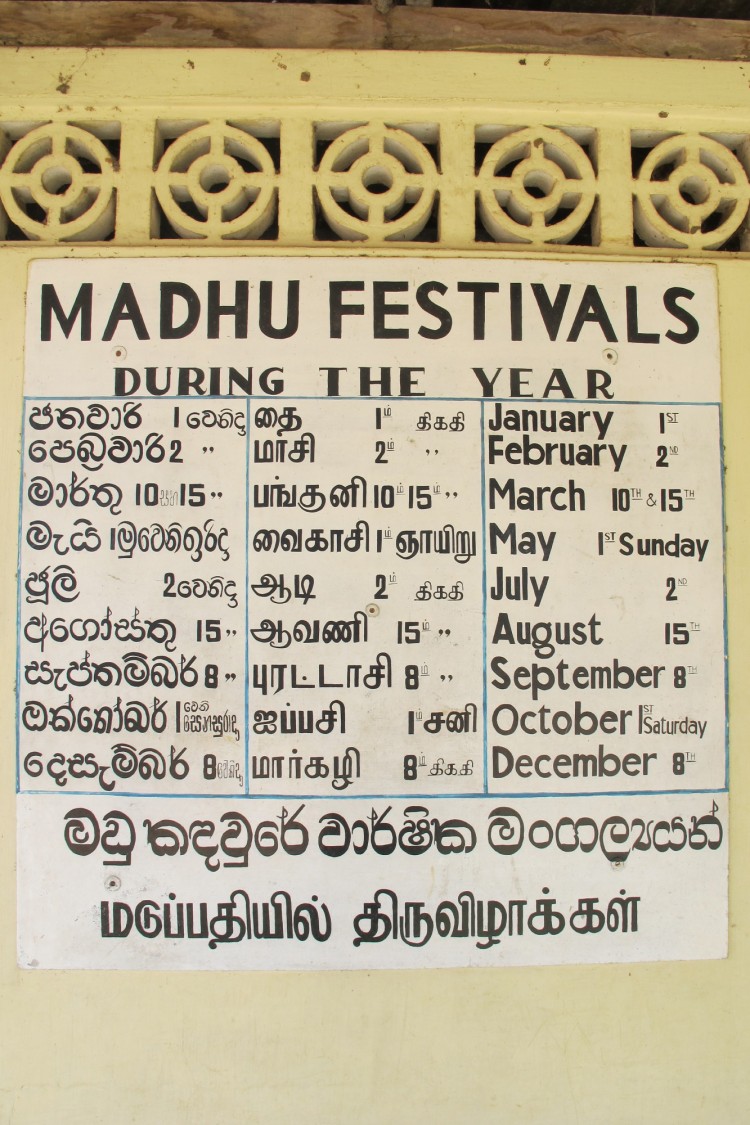
Some thoughts on reading
In my experience, the main hiccup to reading Tamil is the fact that the diacritics can appear before, above and below as well as after the consonant. This feels very counterintuitive for someone coming from a writing system which runs in a more linear fashion. To demonstrate what I mean I have split a few words into their constituent parts:
வேலை (work) = வே (vee) லை (lai)
பெரிய (big) = பெ (pe) ரி (ri) ய (ya)
சாப்பாடு (food) = சா (saa) ப் (p) பா (paa) டு (Du)
Although it’s easy to learn the script, this doesn’t mean that you’ll be speed reading in no time. Only time and familiarity can foster the ability to ‘see’ a syllable as a single unit rather than a collection of strange signs. It will take dozens, maybe hundreds of hours before you learn to read as quickly as you can in English, and the only way to get to that stage is to keep working on it.
I want to finish with a rather contradictory recommendation. After you have learnt the script, don’t try to dive straight into reading texts until you are comfortable with spoken Tamil. First, because the differences between spoken Tamil and written Tamil make reading in these early stages particularly confusing and dispiriting. Second, because I think that the early stages of learning a language are much more productively spent improving your practical competency rather than wading through thousands of unknown words (I’ll be writing about this in the future).
What I am saying is that although a knowledge of the script has innumerable daily benefits, it’s a different skill to being able to understand everything you read. My advice is to gain confidence with the script, use it regularly for small tasks, but set written Tamil aside for a future date.
Mannar bus stand
